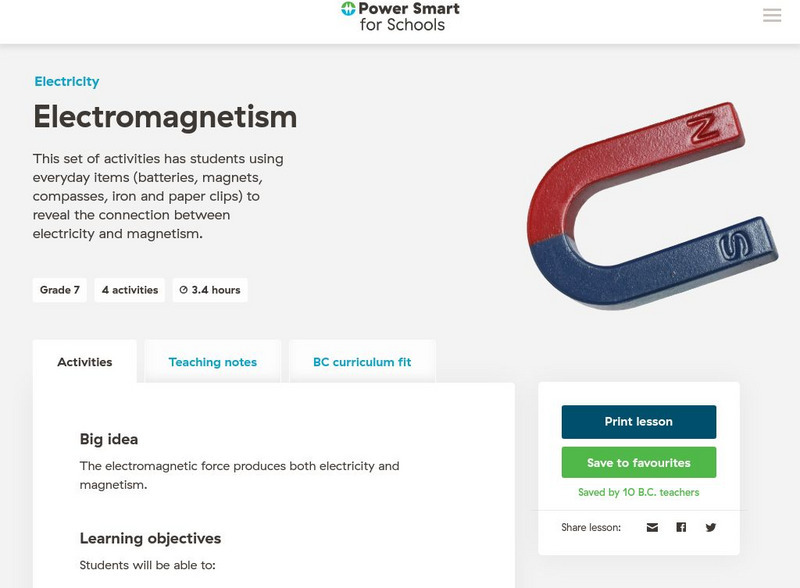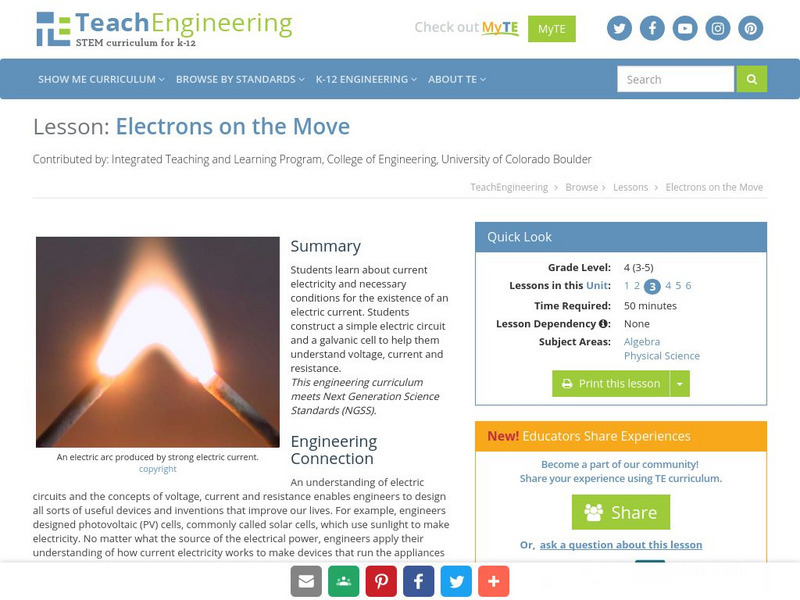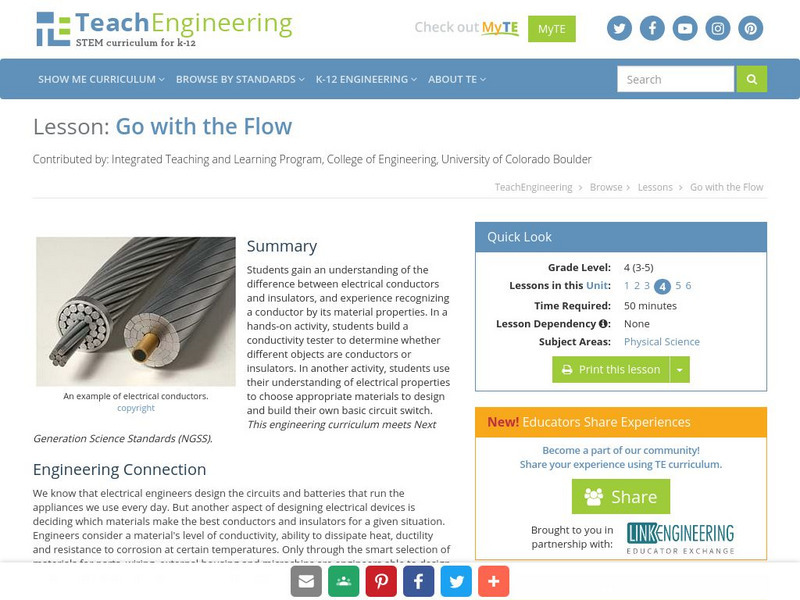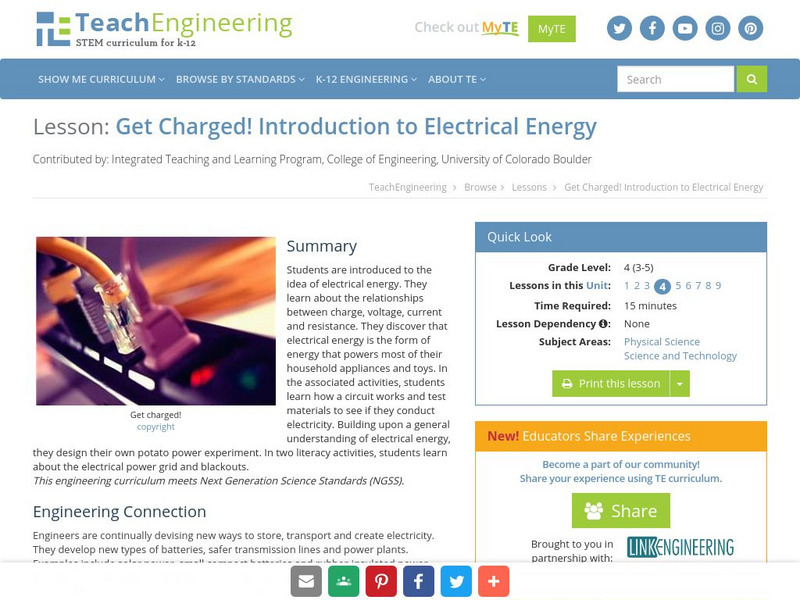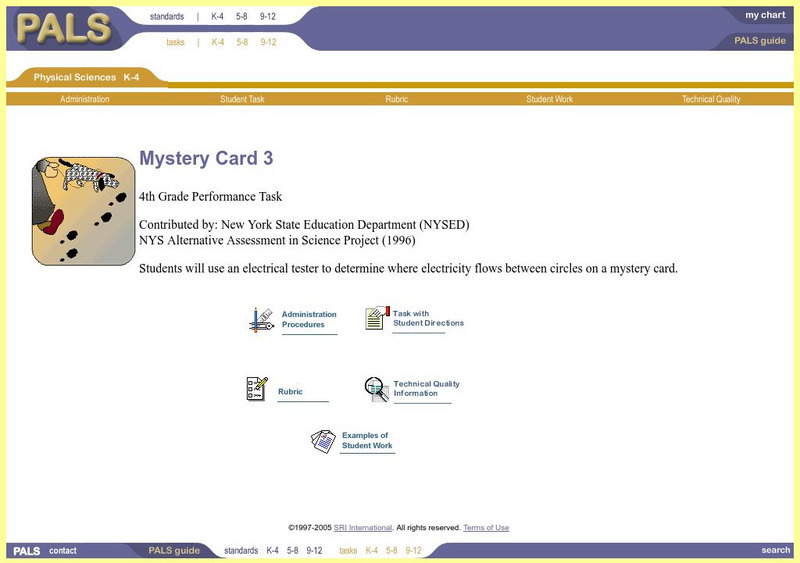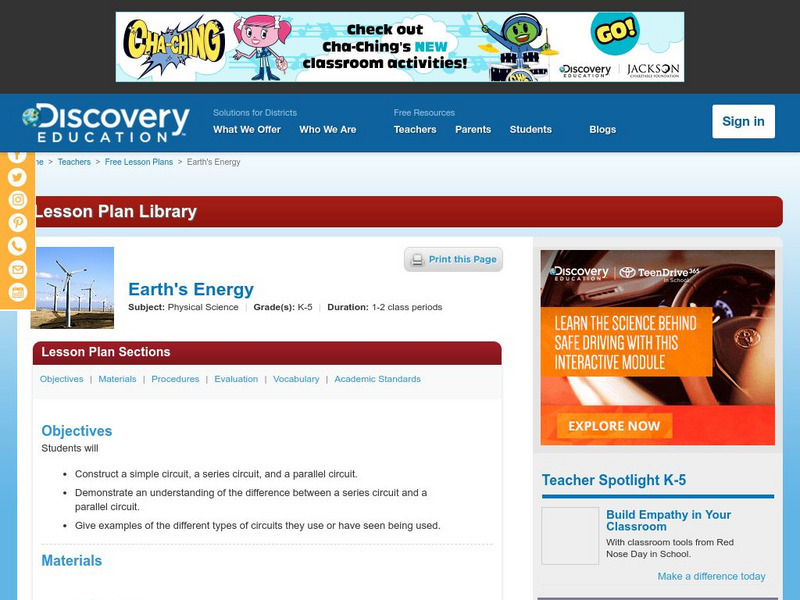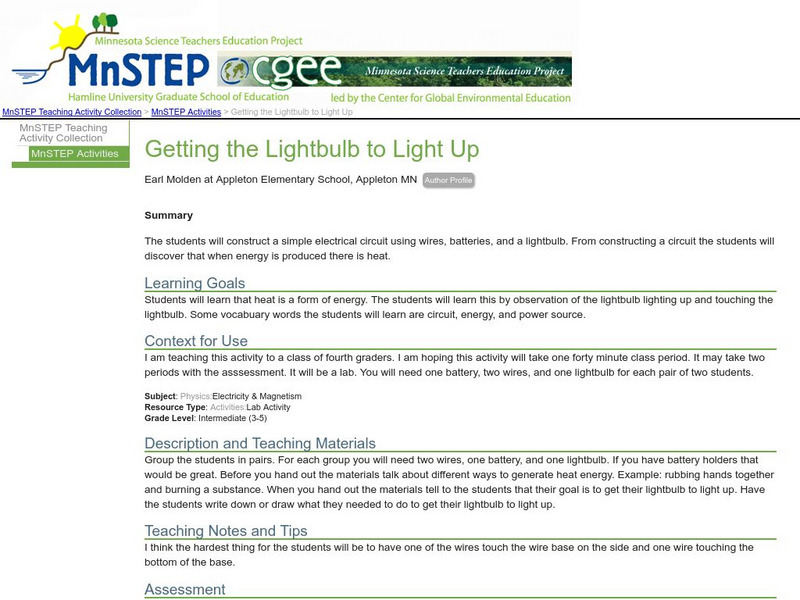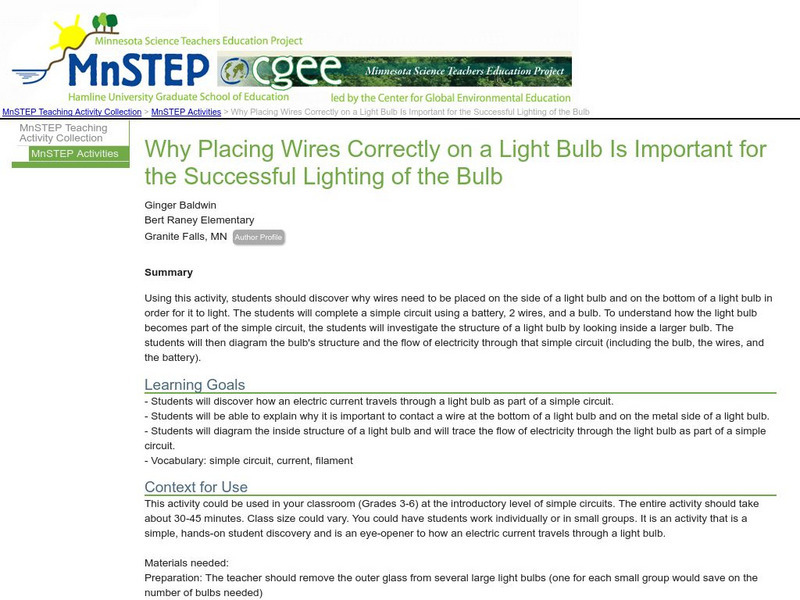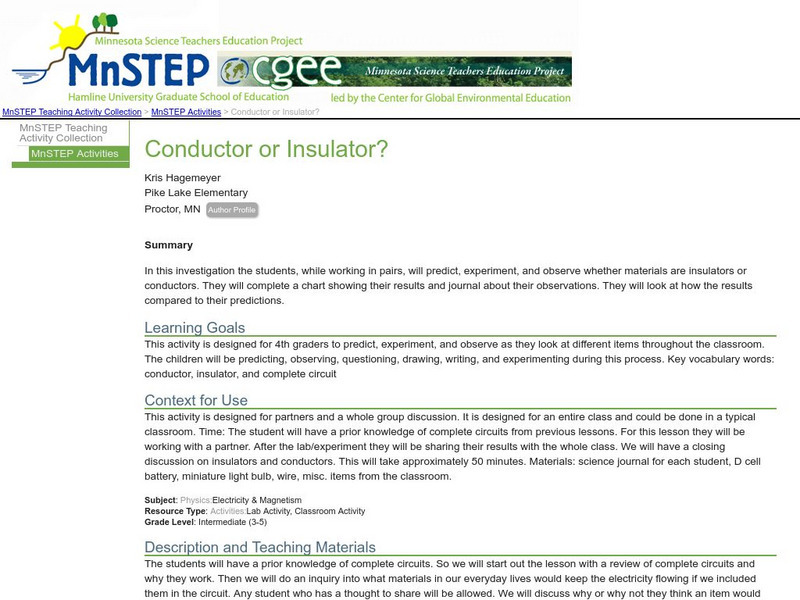TryEngineering
Try Engineering: Flashlights and Batteries
Students work in teams to explore how a flashlight works. This activity examines the topics of batteries, electron flow, circuit systems, switches, and bulbs.
Better Lesson
Better Lesson: The Lightbulb Just Went On!
Fourth graders discover how electricity can be converted to light energy.
Science Education Resource Center at Carleton College
Serc: Investigate Electric Circuits Through Construction and Illustration
In this physics lesson 4th grade students investigate electrical circuits in greater depth than the FOSS unit used in a prior grade in school. Students become familiar with a computer simulation allowing them greater choices of materials...
Science Education Resource Center at Carleton College
Serc: Introduction to Electricity by Creating a Light Up Quiz Board
In this activity, students will learn how to create a simple circuit. They will create a matching quiz board that will light up when the correct pair is selected using electricity vocabulary from the text.
Science Education Resource Center at Carleton College
Serc: Investigating Testing for Electrical Conductivity Using Materials
In this activity, students will understand that electricity moves through different circuits and discover what types of materials are conductors and insulators.
Science and Mathematics Initiative for Learning Enhancement (SMILE)
Smile: Electric Currents and Circuits
This cooperative learning activity for intermediate to junior high learners has them create various electrical circuits in order to understand electricity.
BioEd Online
Bio Ed Online: Neural Network Signals
Nervous system messages are sent as electrical signals along the length of axons and dissolved salts are important for electrical signaling in cells. For this lesson learners are introduced to this concept by creating an electrical...
Other
Bc Hydro: Power Smart for Schools: Electromagnetism
This set of activities has students using everyday items (batteries, magnets, compasses, iron and paper clips) to reveal the connection between electricity and magnetism. Ideally, students will already have experience building simple...
Science and Mathematics Initiative for Learning Enhancement (SMILE)
Smile: Batteries and Bulbs
For the teacher planning a lesson or for the student preparing for a project or presentation. This page describes an activity in which parallel and series circuits are constructed using batteries and bulbs. Complete activity directions...
TeachEngineering
Teach Engineering: Electrons on the Move
Students learn about current electricity and necessary conditions for the existence of an electric current. Students construct a simple electric circuit and a galvanic cell to help them understand voltage, current and resistance.
Alabama Learning Exchange
Alex: Wired for Learning
As part of a unit on electrical circuits, young scholars will work in collaborative groups to create a video of how to construct parallel and series circuits. This lesson plan was created as a result of the Girls Engaged in Math and...
TeachEngineering
Teach Engineering: Go With the Flow
Learners gain an understanding of the difference between electrical conductors and insulators, and experience recognizing a conductor by its material properties. In a hands-on activity, students build a conductivity tester to determine...
TeachEngineering
Teach Engineering: Get Charged!
Students are introduced to the idea of electrical energy. They learn about the relationships between charge, voltage, current and resistance. They discover that electrical energy is the form of energy that powers most of their household...
Science and Mathematics Initiative for Learning Enhancement (SMILE)
Smile: Electron Current Flow
A teacher lesson plan which could be easily converted into an idea for a student project or presentation. This page describes an activity in which the water-electricity analogy is used to investigate the relationship between current,...
Science Education Resource Center at Carleton College
Serc: Learning the Science Behind Electricity
Following a PowerPoint lecture, students will participate in a laboratory investigation where they dissect a disposable camera.
SRI International
Performance Assessment Links in Science: Mystery Card 3
Straightforward introduction to electrical circuits using minimal materials and time. Young scholars learn about the basics of electrical circuits by experimenting with "mystery cards" -- index cards with hidden aluminum foil used to...
Discovery Education
Discovery Education: Earth's Energy
A hands-on lesson for helping students understand simple circuits, series circuits, and parallel circuits, and the differences between the three.
TeachEngineering
Teach Engineering: How Does a Robot Work?
This lesson plan introduces electricity, batteries and motors using a LEGO MINDSTORMS NXT robot. The associated activity guides students to build a simple LEGO NXT set-up and see the practical implementation of the concepts discussed....
Science and Mathematics Initiative for Learning Enhancement (SMILE)
Smile: Electrochemistry
A teacher lesson plan which could be easily converted into an idea for a student project or presentation. This page describes activities in which the interconversion of chemical and electrical energy are investigated. Complete activity...
Oak Ridge National Laboratory
Ornl: Teacher's Guide Superconductivity for High School Students
This site from the Human Genome Project provides a large collection of facts and information, demonstrations, experiments and project ideas. Written for teachers but easily adaptable for any type of student work. A good site to check out...
Science Education Resource Center at Carleton College
Serc: Getting the Lightbulb to Light Up
Young scholars construct a simple electrical circuit using wires, batteries, and a lightbulb. From constructing a circuit the students will discover that when energy is produced there is heat.
Science Education Resource Center at Carleton College
Serc: Mn Step: Why Placing Wires Correctly on a Light Bulb Is Important
Students will learn about simple electric circuits as they investigate the structure of a light bulb and how electricity flows through it.
Science Education Resource Center at Carleton College
Serc: Conductor or Insulator?
In this investigation the students predict, experiment, and observe whether materials are insulators or conductors.
Science Education Resource Center at Carleton College
Serc: Modeling Emf, Potential Difference, and Internal Resistance
Interactive lecture discusses internal resistance which provides help to students in developing an accurate model.
Other popular searches
- Electricity Circuits
- Basic Electricity Circuits
- Electricity Circuits Current
- Electricity Circuits Safety
- Electricity and Circuits
- Basic Electricity and Circuits
- Electricity Simple Circuits
- Electricity Circuits Project
- Electricity Circuits Proiect







